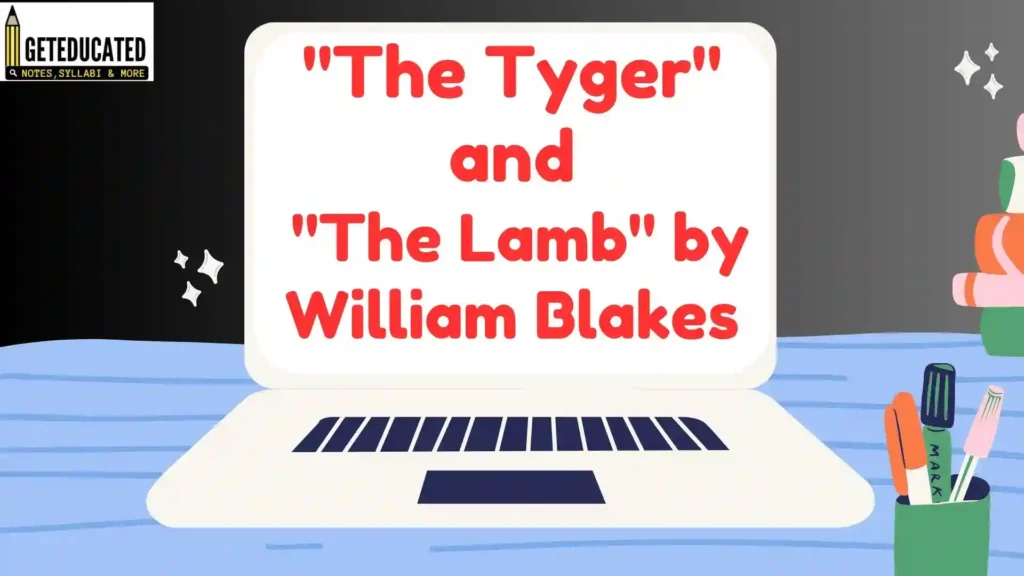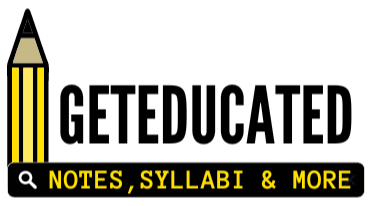
Animal imagery in literature is more often than not used to depict human beings via animal traits or by suggesting some resemblance between the human characters and the image of the animal used for them. It is done to suggest the actual nature of human beings using the habits and conduct as well as the instincts of animals. Animal imagery has not only been used by poets but the authors of plays and novels alike have utilized this tool to vividly describe and portray various characters in their works. It’s a way of symbolizing animal characters by passing on their characteristic features to human characters. It may also be suggestive of the animal peculiarities that one should be watchful of, in human beings.
Be it “The Tyger” and “The Lamb” by William Blake, “The Hawk in the Rain”, “The Crow” “The Jaguar”, “The Thought Fox” poems by Ted Hughes, “Goats and Monkeys”, “A Far Cry from Africa” by Derek Walcott, animal imagery has served poets of all nationalities and languages across continents to convey, reveal and demonstrate the latent feelings concealed in the innermost recesses of their minds. . The animal imagery has been used by poets to represent themes of innocence, experience, deception, violence, spirituality and others for the reader to learn, think, reflect and act with responsibility and duty. Man in his egoistic beliefs of being all powerful and in control has accidentally or otherwise interfered with Nature and this misplaced authority has made him culpable and guilty of the blame he deserves and thus his accountability must be defined in his behavior towards animals and birds in particular and Nature in general.
No other poet or painter of the Romantic era depicts a wider range of animal life, ‘wild & tame’, than does William Blake (Jerusalem 61: 31, E 212). He does so from his early illuminated work There Is No Natural Religion, with its sketched dog and several birds, to his late Illustrations to the Book of Job, featuring not just dogs, birds, lions, horses, oxen, sheep, serpents, spiders, and a frog and a grasshopper, but also God’s colossal creations Behemoth and Leviathan. In addition, several poems from Songs of Innocence and of Experience consider from their ironic vantages the being and in some measure the dignity and worth of various non-human creatures, most notably ‘The Lamb’, ‘The Fly’, and ‘The Tyger’. The terrain of animals ‘in’ Blake is indeed vast and richly meaningful, extending from the poet’s far-ranging representations of non-human creatures, including amid Britain’s colonial worlds, to his acquaintance with and material uses of animals, all making possible his visionary art and life of vision.
In “The Tyger” by William Blake, the animal imagery represents ferocity and a physique that is fearful. This poem is by the visionary poet who seeks an answer from Nature or God by questioning the existence of such a dangerous animal. The first stanza itself sets the tone:
“Tyger Tyger, burning bright,
In the forests of the night;
What immortal hand or eye,
Could frame thy fearful symmetry?”
Critics consider this poem a vital question in all religions that pertains to the creation of evil forces by God and the reason behind such a decision. The poet expresses his wonder at the creation of such a spectacle – the tiger. The poet is in awe of the fact that the Tyger is an embodiment of boldness and violence, of power and control, and shares his apprehension with the reader if it is the same God that also created the highly docile and innocent creatures like the lamb, in the following lines from the poem:
“Did he smile his work to see?
Did he who made the Lamb make thee?”
Again, in the poem “The Lamb”, Blake expresses a sense of disbelief at the wonderous picture of the innocent lamb. He asks a question first about the creator’s inspiration at the time of shaping the virtuous lamb and in the second stanza himself answers that the lamb has been created by the Almighty in the image of Lord Jesus Christ. It’s a childlike enquiry in the poem about the traits and behaviour of the lamb. While the tiger was symbolic of evil, the lamb symbolises everything good and innocent and the sounds and noises produced by the lamb create a happy environment. The poem creates a vivid scenery of the lamb hopping and dancing in the meadows, springing, leaping and prancing around in abundant bliss. The poem indicates the allpervasiveness of the wholesome and sustaining influence of Nature on the lamb and hints at the advantages of nourishing and nurturing the child-like innocence of Nature even in humans, as depicted by the lamb.
Suggested Reading :
Comparison between William Blake’s The Tyger and The Lamb
In Songs of Innocence, for instance, ‘The Lamb’ mainly tells the tale of its innocent child-narrator’s inculcated views: of all life as a gift from God, of wool as ‘clothing’, and of the lamb’s name as a participatory sign for Christ . Lost on this innocent is why Christ is so named, save because‘He is meek & he is mild’ and ‘became a little child’ , echoing Charles Wesley’s popular Methodist hymn with its ‘Loving Jesus, gentle Lamb!’ 14 What the child cannot conceive is a pastoral economy of lambs slaughtered and only thereby ‘made’ paschal symbols for a saviour crucified as a sacrificial lamb. Yet by the same token it is only because of thousands of years of pastoral husbandry that any lamb exists to be so read. What the creature is in itself becomes, in this ironic song, uncertain and a provocation. Within the poem’s pastoral system, the child’s benediction, ‘Little Lamb God bless thee’ , doubly resounds, and all the more for the term bless’s etymology as a symbolic or actual marking with animal blood.
In the Song of Experience ‘The Tyger’, Blake’s naïve adult similarly perceives the tiger in figurative terms that leave the animal’s own being in question. The beast remains for him an inconceivable enigma, created by an ‘immortal’ alone able to ‘grasp’ the creature’s ‘deadly terrors’. ‘Did he who made the Lamb make thee?’ he asks and almost objects. And yet his ironic queries suggest that there is some trace at least of that animal maker’s ‘dread feet’ in the tiger, and some corporeal part, too, of the created tiger in its creator. Their shared animality is thus akin to, and a complement to, the mingling of lamb, divine Jesus, and child, and arguably as problematical, too, in the blurring of identities, save in the terms ‘The Fly’ proffers for its speaker’s identification with a swatted insect: of a common and shared yet also distinctive, non-reducible animality. In this way, miniscule or large, mild or terrifying, these and other of Blake’s animals prompt readers to marvel at and then to question precisely the order and division of things and, wondering more at ‘every thing that lives’, to strive amid the miraculous ‘to make all Nature out’.
The two poems written by William Blake feature animals that are antithetical, one symbolizing the goodness, peace, harmony and unity in the world whilst the other the presence of darkness in the world. Blake makes a similarity between a lamb and a child which are both gentle, mild, and crooning, giving us the sense of its softness and childlike nature. He continues the theme of perfect creation by using dark, powerful imagery bringing in the similarity between a tiger and a child growing older, represents the force of death or as an ‘anti- lamb’ expression.
The first word “little lamb” helps to create the mood of the poem with ideas such as “softest clothing woolly bright”, “tender voice” showing its purity. Also, the description of it being “meek and mild” and ” he became a little child” symbolizes Christ, god’s son and innocence. Framing the tiger’s whole being is “fearful symmetry” and “burning bright”, while “fire of thine eyes” asserting its fierceness and elegance. The “dread hand”, “dread feet” and “deadly terrors clasp” also symbolizes experience and God its creator.
Both poems explore how the presence of innocence, goodness, and unity can be challenged by the presence of experience which is the destruction of the powers of evil. In both these poems, there are questions being asked about its creator. In “The Lamb” there are more questions that are asked showing the innocence of the narrative. Whereas in “The Tyger” not many questions are asked as the narrative voice is more experienced and is also teaching the lamb. A lamb is similar to the child and hence in the first stanza of the poem the narrative voice asks questions such as “Little Lamb who made thee”, “thou know who made thee” and is trying to learn the new things which were not known before, this is answered in the second stanza as “Called by thy name”, “calls himself a Lamb” and “God bless thee”.
While the narrative voice in the other poem knows much better and asks how can someone so calm and tender make such an immortal and ferocious animal as well and is that person happy or sad, “What immortal hand or eye/Could frame thy fearful symmetry” and “Did he smile his work to see/water’d heave with their tears”. This tells us that a child when born is innocent and tries to learn and new things which they have never seen and known before but also have new experiences when growing up.
Just as truly for Blake, a ‘fool sees not the same tree that a wise man sees’ or quite the same tiger, lamb, fly, horse, bird, emmet, or kitten. And in that difference Blake’s expansive art offers both wonderment and motivation. Hence, at the apocalyptic finale of Milton, ‘Immediately the Lark’, a beckoning source of avian genius, ‘mount[s] with a loud trill from Felphams Vale’, while :
The Waggons ready: terrific Lions & Tygers sport & play
All Animals upon the Earth, are prepard in their strength
To go forth to the Great Harvest & Vintage of the Nations.
Milton’s conclusion portrays an intensely wished-for ‘liberation of an unrealised potential, an alternative nature, within’ as well as outside humankind’s historically bound finitude and servitude, as a dynamic pan-animality of the eternal unbounded ‘Human Form Divine’ . Blake’s humanism becomes in this way markedly decentred, marvelling from its own animality, and through its art’s animal materials, at ‘world[s] of delight’ for all that lives, ‘wild & tame’.
In the above two poems, it can be noted that William Blake displayed a revolutionary kind of spiritualism wherein he suggested that God wasn’t only gracious and compassionate in his creations but also the originator of malevolent and ferocious beings on eart. God was the creator of the good as well as the evil. “The Tyger” represents all that is bad, problematic and enigmatic whereas “The Lamb” symbolises the virtuous, decent and righteous aspects. “The Tyger” sets the menacing and threatening tone and in opposition, “The Lamb” inspires happiness, exuberance and a fun-loving atmosphere.

[…] Use of Animal Imagery in Blake’s Poem – The Tyger and The Lamb […]
[…] Animal imagery in literature is more often than not used to depict human beings via animal traits or by suggesting some resemblance between the human characters and the image of the animal used for them. It is done to suggest the actual nature of human beings using the habits and conduct as well as the instincts of animals. Animal imagery has not only been used by poets but the authors of plays and novels alike have utilized this tool to vividly describe and portray various characters in their works. It’s a way of symbolizing animal characters by passing on their characteristic features to human characters. It may also be suggestive of the animal peculiarities that one should be watchful of, in human beings. … (Read More) […]